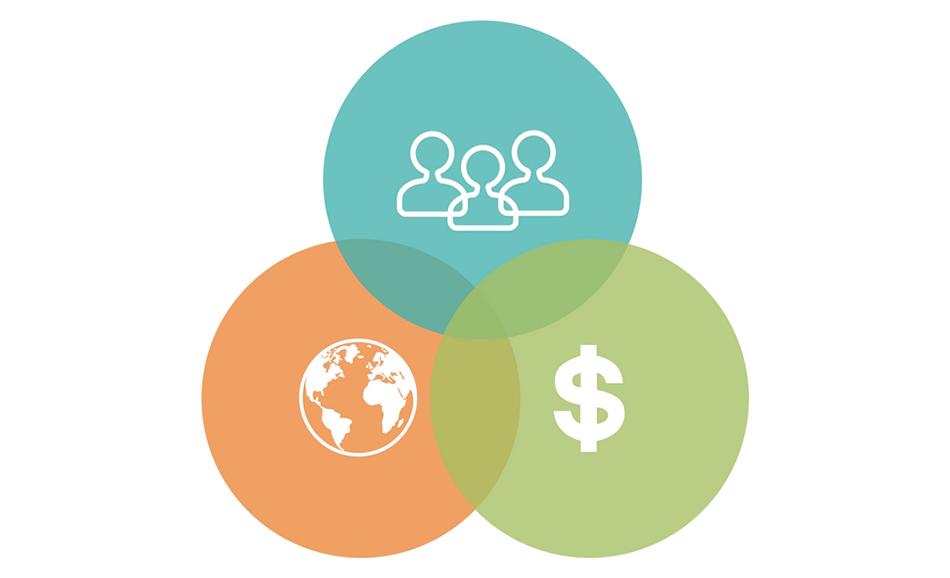Does Your Company Incorporate Sustainability?
your guide to sustainability: the basics
19 september '22
Reading time: 7 minutes
With the growing risks of climate change, the importance of companies transitioning to sustainable practices is ever-increasing. If you’re asking if it’s possible to recognize firms that have sustainable business models, the answer is yes. Here’s how.
Words by Shivani Karnik

Did you know that globally more than a third of consumers are willing to pay more for sustainability? Individually, sustainable practices are vital for our survival. Likewise, businesses need sustainability for better and smoother functioning. A sustainable business has a better brand image and value, can attract more investors, reduces wastage and costs while increasing revenue, can recruit and retain motivated employees, and builds a loyal customer base.
The need for a company to move towards becoming a sustainable business lies on what stakeholders value more. These days the impact of a company on a social and environmental level is deeply under scrutiny. Stakeholders now value the way a business can incorporate sustainability in its structure and practices, as, hopefully, companies’ goals have evolved over time.
Role of Companies in Sustainable Development
Traditionally, the goal of a company was to focus on its regular business, without considering its value or impact on society. This belief is encapsulated in Friedman’s theory. According to Friedman, a business's only “social” responsibility is to increase its profits, also called shareholder theory as only shareholders benefit from this approach.
Meanwhile, Freeman is a proponent of the stakeholder theory. The focus of a business’s efforts is on stakeholders, which can include a wide variety of players, including the local community, customers, employees, suppliers and everyone who is directly or indirectly impacted by the company’s practices and results. Sustainable business models find their roots in the stakeholder theory.
Sustainable business model: the meaning
Before defining what a sustainable business model is, let’s first understand the term business model. The business model of a company defines how businesses create, deliver, and capture organizational value, which includes the organizational structure, policies, operational processes, and business practices among other aspects.
The major difference between a sustainable business model and a non-sustainable one, is that the first one focuses on adding value to stakeholders, the environment and society, while the second one focuses on extracting value from the environment and society.
A sustainable business model aims to achieve its values without depleting the natural, social and economic capital it relies on. A business can switch from an unsustainable to a sustainable model by developing a strategy redefining the purpose of its existence, what it can offer and what problems it can address, and how will its operations lead to social, economic, and environmental improvement holistically.
After creating a strategy, the next step is to identify core values and work on integrating sustainability into those to create shared value, which can be done by incorporating sustainable practices tailored specifically to an organization’s structure and purpose.

An overview of organization types: what’s yours?
Depending on the value that we want to create, business decisions will be different, and so organizations. Organizations may differ in age, size, nature of business, and liability issues among other factors. Let’s explore the most relevant ones and their relationship with sustainability.
Traditional for-profit organization. As the name suggests, a for-profit organization’s main goal is to earn profit. Its ability to pay covers the cost of operations. Here, it’s helpful to remember that sustainability and profitability aren’t mutually exclusive. Therefore, we can still create shared value by implementing an Environmental, Social, and Governance (ESG) strategy that can aid in achieving both.
Traditional non-profit organization. A non-profit organization is a legal entity organized and operated for a collective, public or social benefit and the income generated from its operations is not distributed to its members, but re-invested in the mission.
Hybrid organizations. These organizations are better suited for sustainable business models as they create economic and social value together through social support programs and funding activities. Types of such organizations are:
1. Non-Profit with income-Generating Activities: a type of financially sustainable non-profit organization which works for the same goals of the traditional one. To enhance their financial sustainability, such nonprofits need to adopt proper financial management through different techniques.
2. Social Enterprise: it has a specific social objective while conducting business. Its goal is to maximize profit while maximizing benefits to society. Social Enterprises can contribute more towards sustainability by ethical sourcing of their products, employing persons from marginalized communities, and distributing their profits, products, and services to targeted communities in need.
3. Socially Responsible Business: it leverages its profit-making activities to achieve sustainability. Socially responsible businesses achieve sustainability through engaging with the community and NGOs. They also use their brand value to drive campaigns for raising awareness on sustainability issues and to raise funds for their activities.
4. Corporate Performing CSR: another way through which for-profit businesses support sustainable development. A business can make its CSR process more sustainable through identifying issues important to its stakeholders and providing solutions , using its competencies such as providing technological solutions for sustainability, a direct response to emerging situations, and maintaining transparency on all CSR activities for feedback.
How to integrate sustainability where needed?
53% of businesses report climate change as a substantive risk, a risk that can be reduced by sustainable business practices. Many investors also practice screening investments through environmental, social, and corporate governance, in consonance with the triple bottom line theory, which states that companies should focus on environmental and social issues apart from financial issues.
There are also a variety of indexes, such as the Dow Jones Index for assessment of sustainability in businesses. Businesses often show their commitment to sustainable business practices by voluntarily taking part in these indices. The Dow Jones Index particularly measures seven capitals as its parameters: intellectual, customer, manufactured, human, environmental, social, and financial. Measuring a business on these parameters can also keep it on track to achieving its sustainable goals.
Another method to assess a business’s sustainability is to check its performance on each SDG. SDGs Business Index (SDGBI) is the world’s first index to measure the performance of businesses on the sixteen SDGs. It ranks businesses on the basis of forty-eight indicators including society, environment, economy, and policy.



































